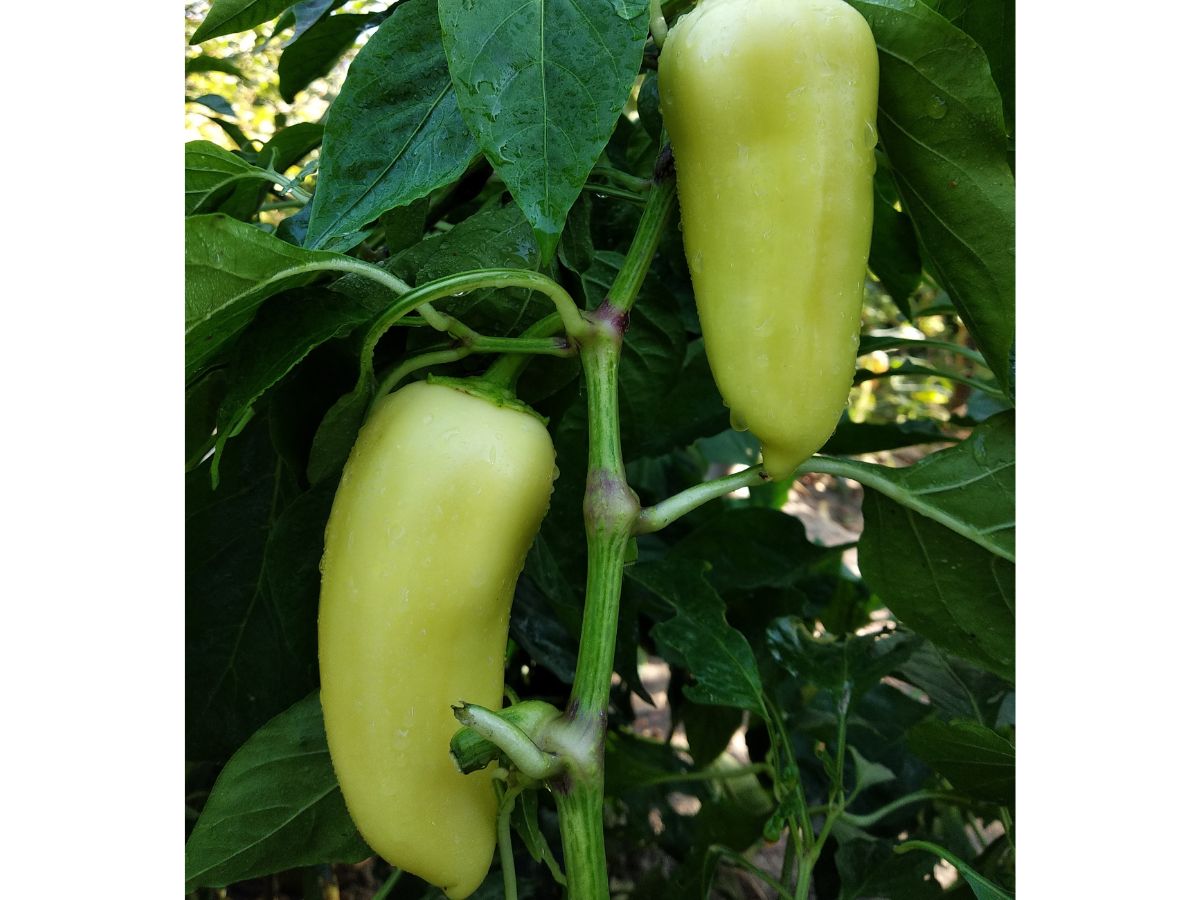How to Grow
How To Grow Capsicum Plant (Shimla Mirch) Or Bell Pepper Plant at Home
Capsicum (aka Bell Pepper) or shimla mirch in Hindi is one of the favourites in every Indian kitchen.
This uniquely shaped vegetable is enjoyed in many Indian dishes – the most notable being aloo-shimla mirch.
Capsicum is one of those versatile vegetables that one can put in any dish (eg. fried rice, maggi, omelettes, etc) to enhance the taste, flavour or presentation.
And shimla mirch doesn’t stop surprising you here!
It has lots of health benefits too.
It’s a rich source of vitamin C. Studies say that capsicum can prevent cancer, boost immunity, strengthen bones, and also reduce anxiety.
In this blog, we will get to know capsicum better and learn about growing tips at home.
- Facts about Capsicum plant
- Health benefits of Capsicum
- How to grow Capsicum at home easily
- Growing capsicum using seeds
- Growing capsicum using stem-cutting method
- Gardening & care tips for capsicum plant
Facts about Capsicum Plant
Per 100 gms of green capsicum is enriched with the following: -
|
Energy |
16 kcal |
|
Carbohydrates |
1.9 gms |
|
Fat |
0.3 gm |
|
Fiber |
2.1 gms |
|
Vitamin C |
123 mg |
|
Folic Acid |
52 mcg |
|
Beta – Carotene |
328 mg |
|
Vitamin A |
55 mcg |
Health Benefits of Capsicum
Capsicum further has the following health benefits: -
Relieving stress and anxiety
Stress and anxiety are quite common among people these days. Small changes in diet can be beneficial. Capsicum has magnesium and vitamin B6, which maintain normalcy in the nervous system. It helps in relieving anxiety and preventing panic attacks. Not only that, but the muscle tension caused by anxiety is also reduced with regular consumption of capsicum.
Preventing anaemia
Low iron in the body causes anaemia, which in turn reduces the amount of oxygen in the blood. That’s why most people with anaemia feel tired all the time. Capsicum is high in iron and vitamin C, and when these two come together, it increases the oxygen flow in the blood.
Good for heart health
A study in 2017 suggested that those who consume capsicum daily have reduced chances of mortality compared to those who don’t. That’s because there are flavonoids in capsicum that prevent heart diseases.
Good for diabetic patients
Capsaicin, an ingredient in capsicum, is beneficial for diabetic patients. People with type 1 diabetes must consume this vegetable regularly, and within months a considerable reduction in sugar levels will be noticed. People with type 2 diabetes will also benefit from regular consumption of capsicums.
Improves immunity
A strong immune system is the biggest blessing one can ask for. With a proper diet, immunity can be enhanced. Capsicum is a rich source of Vitamin C, and foods that are rich in Vitamin C build a better immune system. Also, it protects against infection caused by the production of white blood cells.
Good for eye health
The health of human eyes will benefit greatly from capsicum because Lutein and zeaxanthin – two carotenoids that protect the retina from oxidative damage, are profusely present in capsicums. Free radicals can grow in our eyes, which are immediately exposed to oxygen and light, and harm their cells. These two carotenoids will protect our eyes by neutralising those free radicals.
Prevent cancer
Capsicum is a rich source of antioxidants. Its anti-inflammatory properties are also notable. The presence of both of these qualities makes capsicum worthy of preventing cancer. carotenoid lycopene is present in capsicums, and that lowers the risk of bladder, prostate, cervix, or pancreatic cancer. Orange capsicums have been found to be most effective, as they can reduce prostate cancer growth by 75%.
Good for arthritis pain
The anti-inflammatory properties of capsicum are related to conditions that are associated with pain. Patients with chronic arthritic pain benefit from it. The phytochemicals in capsicum engage with proximal nerve endings to mute them, eliminating the pain symptom in the process.
Helps in menopause
Consuming foods high in flavonoids, such as capsicum, can help women who are close to menopause.
Rich in vitamins and minerals
Not only being high in fibre, capsicum is also a great source of micronutrients that are very helpful for bodily processes. Due to their high vitamin C content, capsicums are able to support a number of processes, including collagen production, wound healing, and immune system function. Along with vitamin C, capsicum also contains a lot of vitamin A, which is crucial for the immune system and reproduction.
How to Grow Capsicum at Home Easily?
Capsicum is one of the easier homegrown vegetables. Clear out some area on your balcony or terrace and grow capsicum. It’s a beautiful feeling when you get to eat your homegrown vegetables. Nothing enhances the flavour of your dish like a freshly cut, organically cultivated capsicum – isn’t it?
So, follow the steps mentioned below and enjoy your home production of bell peppers or capsicum.
- Start the capsicum seeds indoors in early spring, and when they reach a height of about 4 inches, transplant them into the garden
- Before you begin, you must first make the potting mix rich in nutrients. Peat moss and perlite should be used in equal amounts, along with some fertilizer.
- Now you have to sow the seeds on the prepared soil bed. Until germination takes place, lightly cover them and keep the soil moist. As germination occurs, take off the cover, and keep watering as required.
- After 2 weeks, you have to think about thinning out the plants as spacing is important for good growth. Keep in a sunny area and make sure there’s plenty of space all around.
Now, look into two different methods of growing: -
Growing capsicum using seeds
- You have to start preparing 8-10 weeks before planting outside if you are opting for this method. The seed preparation has to start indoors.
- Capsicum is almost a daily vegetable on the table, so you must be bringing it from the market often. Usually, you throw away the seeds, right? Don’t throw them away this time.
- Use those seeds to enjoy your own capsicum plant. Clean the seeds and dry them.
- Take a clean container and put in good soil enriched with peat moss and fertilizer. Sow the seeds and water the soil.
- Cover the container well so that the seeds germinate. When you see shoots coming out, remove the cover and keep them in good sunlight.
- So, choose a location that receives abundant sunlight. It will help the plants grow faster.
- The temperature provided should not exceed 20–25 degrees Celsius during the day and 15 degrees Celsius at night.
- Watering is necessary; otherwise, the nutrients won’t reach the leaves. So, use a dropper bottle, spray bottle, etc. to water the seedlings daily. You have to make sure the soil is moist but not soggy.
- As the plant is 3 months old, you will require a larger container.
- Now you have to expose the plant to cooler temperatures for a few days. As the weather cools down, place the capsicum plants outside in a shady area without direct sunlight. Continue this process so that the plant gets accustomed to the outside environment. As the temperature warms up, you can bring the plants inside.
- This plant is then ready to be planted outside.
Growing capsicum using stem-cutting method
Stem-cutting is another innovative way to grow a capsicum plant. It saves much time compared to the seed method. So, start following the steps below and grow your capsicum plant.
- First of all, you need to collect some healthy stems of the capsicum plant and trim the leaves or flowers.
- Take a nice, big container or plant pot and fill it with compost, followed by nutrient-rich, well-drained soil.
- Now moisten the soil, and then take the stems and carefully put them in this soil
- Find a warm and sunny spot in your home to place this pot
- The moment you find new leaves, pinch them back to encourage new growth
- Some say that using a propagator is the ideal way to grow capsicum plants at home. It's nothing more than a plastic container with a lid to cover it. You need to fill this container with potting soil, put in the stem, and cover the lid. This is the same as mentioned in the seed process.
- You can do the same thing with a normal pot and cover it with a plastic bag
- Keep the pot under good sunlight for at least 2 weeks before transplanting
Gardening & care tips for capsicum plant
Location
Any location in your home, garden, or terrace that receives an ample amount of sunlight is ideal for the growth of a capsicum plant.
Water
Bell peppers or capsicum require deep watering. If you live in a place with high temperatures, then water this plant twice a day. Dry conditions don’t produce good quality capsicum. And again, over-watering will kill the roots. So, monitor your watering times closely. A well-drained yet moist soil is what capsicums need.
Soil
A well-drained soil that has received manure, compost, and organic fertilisers is ideal for growing capsicum plants. You can increase the calcium level of the soil by adding dolomite or lime, but be sure to monitor the pH to make sure the soil stays acidic.
Companion plants
The thing is, capsicums grow well around other plants like cucumbers, corn, and carrots. But refrain from putting it near fennel or cabbage plants.
Fertiliser
To encourage the growth of your bell peppers without reducing the frequency of fruit production, fertilise with a substance low in nitrogen.
Sunlight
Capsicum plants need full, bright sunlight to flourish. So, choose a sunny spot in your indoor or outdoor garden and grow your own capsicums. In case your place is already hot and humid, you can provide partial sunlight to your plant by placing capsicum plants under big, shady trees.
Temperature
A capsicum plant will need 25-30 degrees Celsius at day time and 18 degrees Celsius at night.
Bottomline
Apart from bringing that extra zing to your dishes, capsicums are also a blessing for good health. As mentioned in the blog, the antioxidants present in bell peppers help boost immunity, enabling us to fend off numerous infections and disorders. It is also simple to cultivate at home. What are you still holding out for? Get your tools and start growing bell peppers at home.
Frequently Asked Questions (FAQs) about Capsicum Plant
1.How long does capsicum take to grow?
Capsicum usually begins to fruit 12-15 weeks after planting or sowing. However, temperature, soil variety, and sunlight play a role in determining how long it will take to grow.
2.Is capsicum easy to grow?
Yes, capsicums are fairly easy to grow at home yourself, provided you follow the right technique and instructions!
3.Does capsicum need full sun?
Capsicum plants love the sun and warmth. But since they thrive in moderate temperatures, it is best to pick a spot that is partially shaded.
4.How often should I water capsicum?
The frequency of watering your capsicum plant depends on the weather. The plant can be watered twice a day if the weather is excessively hot, and only once every 2-3 days if the weather is cooler.
5.How long do capsicum plants last?
Under the right conditions – including stable, warm weather – and care, capsicum plants can go on to live for several years. A lot also depends on the variety of the capsicum itself.
6.How many capsicums do you get off one plant?
One capsicum plant, on an average, will produce 6-10 capsicums during the growing season. But then again, the weather, amount of care, and variety of plant will also help determine the number of capsicums you get.
7.How can I make capsicum grow faster?
Certain tips could make your capsicum plant grow faster. These include transplanting at the right time, using a fertilizer, pruning regularly, and watering prudently. You should also try and make sure your plant receives the right combination of sun and shade.



